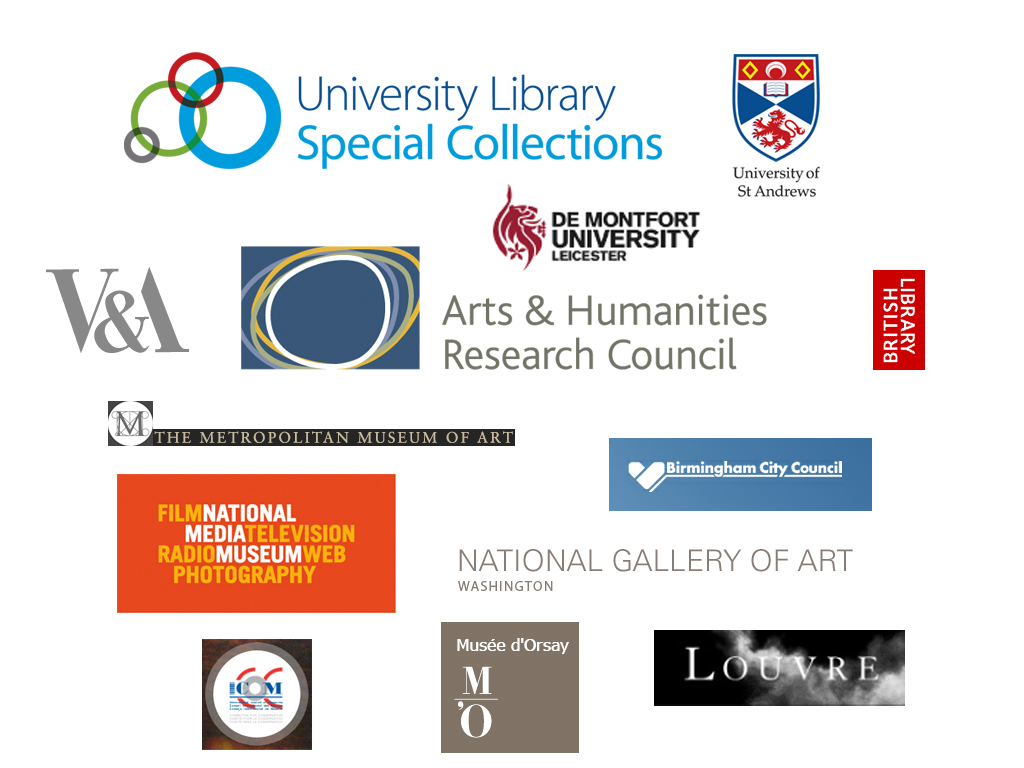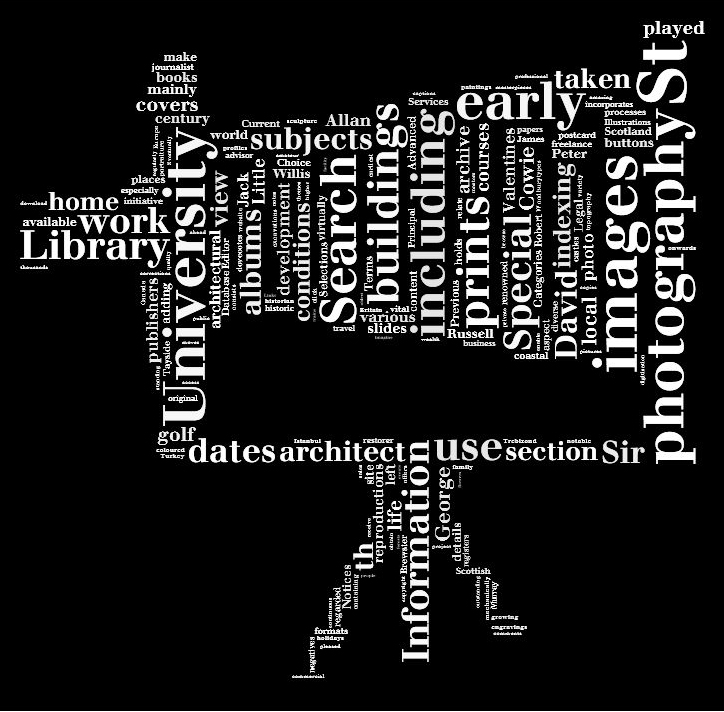Special Collections partners with DeMontfort University to improve access to photographic collections in a new AHRC funded project
In September of 2010 as part of the DeMontfort University Photographic History Networking Symposium, curators, archivists and conservators from across Britain and select institutions from Europe and the United States discussed aspirations for a collaborative research project directed by DeMontfort University. The objective of the project was to research the application of a specific computational means known as “fuzzy logic” to facilitating access to photographic collections.
In 2011, as a component of applying for financial support from the Arts and Humanities Research Council (AHRC), anadvisorycommittee comprised of representatives of preeminent photographic collections was formed to support the project’s objectives:
Martin Barnes, Senior Curator of Photographs, Victoria and Albert Museum
Marc Boulay Photographic Archivist, University of St Andrews Library
John Falconer, Lead Curator of Visual Arts, British Library
Colin Harding, Curator of Photographic Technology, National Media Museum Bradford
Pete James, Head of Photographs, Birmingham Central Library
Professor Robert John, Head of Department of Informatics, DeMontfort University
Constance McCabe, Head of Photograph Conservation, National Gallery of Art, Washington
Dominique de Font Reaulx, Conservateur, Musee du Louvre, Paris
Professor Roger Taylor, Professor Emeritus, Photohistory, DeMontfort University
Clara von Waldthausen, coordinator of the ICOM-CC Photographic Working Group
Professor Stephen Brown, Head of the School of Media and Communication at De Montfort University describes the project:
“FuzzyPhoto is a two year AHRC funded research project that is developing and testing computer-based “finding aids” that can recommend potential matches between historical photographic exhibition catalogue records and images of photographs that appear in online collections, even where there is not a precise match. Incomplete historical data sets and imprecise information are common problems in the arts and humanities so the results of this research will be applicable across a wide range of subjects, allowing researchers to save considerable time and travel in the early stages of their research when identifying material most likely to be of interest to their studies. The project outcomes will assist museums, libraries and archives to enhance the value and utility of their collections and of their online services through increased information, improved accuracy and functionality. Within the UK alone over 1,000 museums, archives, libraries and galleries could potentially benefit from this research. Within the private sector, beneficiaries include commercial dealers and auction houses concerned with attribution and value. The benefit to the general public will be the increased accuracy and detail of information about objects in museums, libraries and archives. The project is hosted by the De Montfort University Photographic History Research Centre in collaboration with the Centre for Computational Intelligence. Project partners are Birmingham Central Library. the British Library, the Musee d’Orsay and the Musee du Louvre, Paris, the International Council of Museums, the Metropolitan Museum, New York, the National Media Museum, St Andrews University and the V&A.”
With funding generously provided by the AHRC, we’ve just received confirmation that the project is scheduled to start in November 2012.
–Marc Boulay
Photographic Archivist

